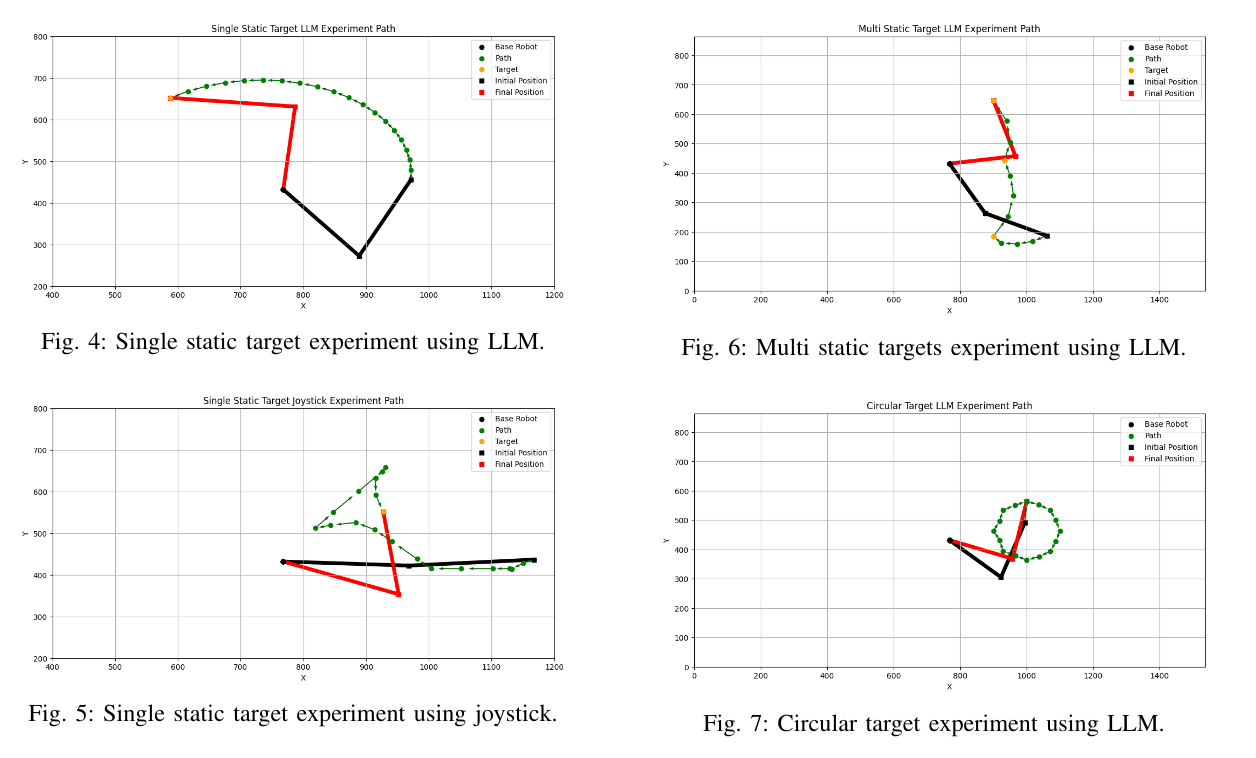(Research Assistant) Upper Limb Rehabilitation Robot Control based on Large Language Model
Using Large Language Models as Control Interfaces for Upper Limb Rehabilitation Robots

Brief Review
Stroke is a life-threatening condition, and survivors often face significant disabilities that reduce their quality of life, making effective rehabilitation systems essential. Automation technology, such as robotics, offers a promising solution to improve the quality of rehabilitation. However, implementing this technology can be challenging for users due to interface complexity. To ensure easier adoption, the user interface of these systems must be both comfortable and easy to use.
Large Language Models (LLMs) currently offer a promising solution to this challenge. This study explores the use of an LLM as a control interface for an upper limb rehabilitation robot. By combining high-level task execution based on LLMs and low-level forward kinematics, we exploit the intuitiveness of LLMs and the accuracy of model-based control to perform various rehabilitation tasks more easily.
Project Summary
Challenges in Rehabilitation Robotics:
- User Interface Complexity: Traditional robotic rehabilitation systems often have complex interfaces, making them difficult for patients and clinicians to use effectively.
- Adoption Barriers: The complexity can hinder widespread adoption, limiting the benefits that robotic rehabilitation could provide to stroke survivors.
Our Approach:
- Integration of LLMs:
- Utilized a Large Language Model as the control interface for the rehabilitation robot.
- Allowed users to interact with the robot using natural language commands, enhancing usability and comfort.
- High-Level and Low-Level Control:
- High-Level Task Execution: The LLM interprets user intentions and translates them into actionable commands.
- Low-Level Forward Kinematics: Ensures precise control of the robot’s movements, maintaining the accuracy required for effective rehabilitation exercises.
- Usability Testing:
- Conducted rehabilitation robot usability tests comparing the LLM-based control interface with traditional keypad-based controls.
- Assessed performance based on success rates and user experience.
Results:
- The LLM-based control interface significantly outperformed traditional keypad-based controls.
- Achieved a high success rate in trials, indicating improved usability and effectiveness.
- Users reported a more intuitive and comfortable interaction with the robot.
Conclusion
The findings demonstrate that integrating Large Language Models as control interfaces can greatly enhance the usability of upper limb rehabilitation robots. By leveraging the intuitiveness of LLMs for high-level task execution and the precision of model-based control for low-level operations, rehabilitation tasks become more accessible and effective for users. This approach has the potential to lower adoption barriers, allowing more stroke survivors to benefit from advanced robotic rehabilitation systems.
